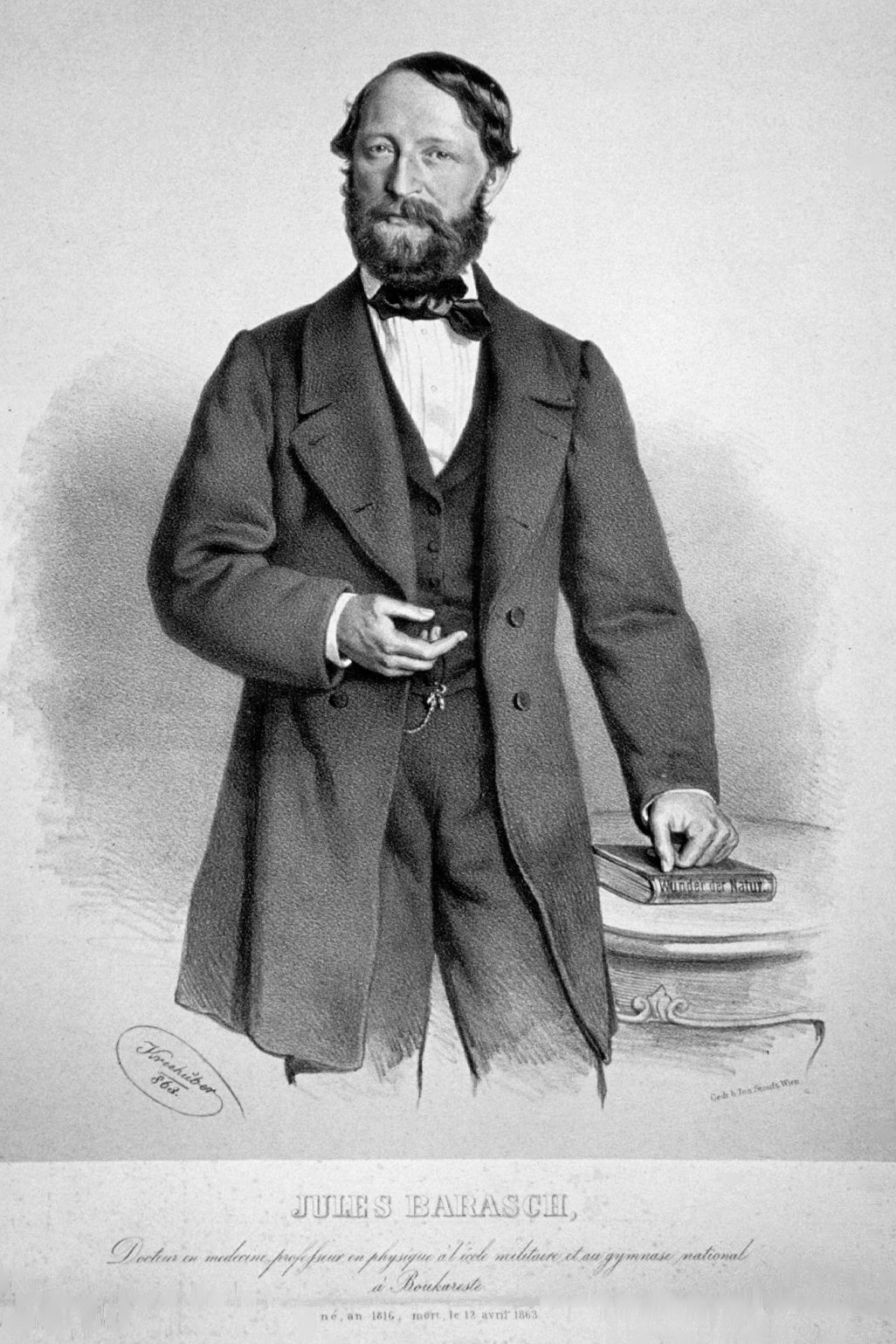
Learning and the figure of the scholar were at the center of Jewish culture for many generations. In the Romanian principalities, with the development of community life, the Jewish spiritual and cultural life developed as well. The rabbis, whose main role was to guide their community members according to the Jewish law and traditions, attempted to recreate the traditional life of their native lands, dealt with learning and teaching, and some of them have composed written texts.
The first Jewish writers in the Romanian principalities came from Ukraine and Galicia, and from there came also the rabbis and teachers. Over the years, two main centers for Jewish learning developed in Iaşi and in Bucharest, and books dealing with Halakha, Kabbala ,Hasidism, and Jewish Philosophy and History were published in Iaşi, Lemberg and Vienna.
Periods of relative effervescence within the religious lives of the communities were due to the presence of Hasidic leaders or erudite rabbis who developed various works on biblical or Talmudic exegesis that were published. Several centers of Talmudic study emerged in Moldova in Sadagora, Iaşi, Stefaneşti, Vaslui, Dorohoi, Fălticeni, Buhuşi and Podul Turcului. Eventually centers expanded to Walachia, in Bucharest and Craiova.
The first a religious Hebrew writer in the Romanian territory was Rabbi Nathan Nata ben Moses Hannover, historian,Talmudist and kabbalist. Born in Ukraine, he survived the Chmelnitsky pogroms, moved to Iaşi, and lived there for ten years. In his Iven Metzula(The Abyss of Despair) he brings an eyewitness account of the pogroms. During his stay in Iaşi, Hannover wrote two of his books: Safah Berurah, a dictionary of the Hebrew, German, Italian and Latin languages (1660), and Sha'arey Zyion (1662), a collection of mystical prayers, both published in Prague.
Another author who wrote during his stay in Iaşi,was Rabbi Petahia Lyda. Born in Galicia, he was rabbi of Iaşi between 1705-1711, and during his stay there he wrote two books together with his father, Rabbi David Lyda: Yad Kol Bo and Yir David shel hatorah, that were published in Amsterdam in 1719.
Almost a hundred years passed, before another writer emerged from among the Hasidim in the Romanian principalities. Rabi Hayyim Shlomo Tyrer, rabbi and kabalist, is known for several works. The only book published during his lifetime, Sidurshel Shabbat published in Mogilev in 1812-1813 was well received among the Hasidim, and published in 20 additional editions.
The first Halakha, book written in the Romanian principalities is Pnei Moshe im Maree Panim by Rabbi Moshe Pinhas, published in Kurtz ,Ukraine, in 1818. Born in Galicia, Moshe Pinhas became the rabbi of Focşani, and later became rabbi of Sadagora and Bârlad. Another important writer was Rabbi Josef Landau who was born Ukraine and became rabbi of Iaşi in 1834. In spite of his Hasidic education, Landau wrote Birkat Yosef (Josef's Blessing), an important Halakha book published in Lemberg in 1869. The first author of a Halakha book born in the Romanian principalities, was Moses Alter Baraff. Born in Botoşaniin1815,heserved as rabbi of the community, and his book, Divrei Moshe deals with the Ritual circumcision laws.
Under the influence of the Haskakah, a secular Hebrew literature developed, best represented by Iuliu Barash and Benjamin Wolf Ehrenkranz, though anticipated by Mordekhai Strekisker, Menahem Pineles, Matityahu Ravener, and others. Substantial pedagogical activity disseminated the Hebrew language through schoolbooks and various publications. Major contributors were Moshe Orenstein and Hillel Kahana in Botoşani, and Menahem Braunstein- Mebasan. Eliezer Rokah came from Jerusalem to promote Hebrew and Yiddish culture and to encourage Romanian Jews to move to the Land of Israel, even before the establishment of the Zionist movement.
In the second half of the nineteenth century, intellectuals and scholars, mainly from Galicia and Bessarabia, laid the foundations for communal and cultural institutions in Romania. Many were also prominent in the broader Romanian cultural and scientific environment, including Iuliu Barasch, Beniamin Schwarzfeld and his sons, Elias, Moses and Wilhelm, Moses Gaster, and philologists such as Heinrich Tiktin. These intellectuals, who had been educated in European universities or rabbinical seminaries, helped to modernize Jewish culture and education. Some of them, Moses Schwarzfeld above all, researched and wrote the history of Romanian Jews, and edited Judaic history reviews, including Anuar pentru israeliti (Yearbok for Israelites, 1877-1899) and Analele Societatii Istorice Iuliu Barasch (Annals of the Iuliu Barash Historical Society, 1887-1889).
The first Jews who gained reputation as writers were scholars who became pioneers of Romanian linguistic and folkloric studies. Among them, Moses Gaster (1856–1939), Heimann Tiktin (1850–1936), and Lazăr Şăineanu (1859–1934).
Theodor Lavi, ed. Pinkas Hakehillot, Rumania ( Encyclopedia of Jewish Communities), Romania, vol. I, Yad Vashem, Jerusalem, 1969, 67-74